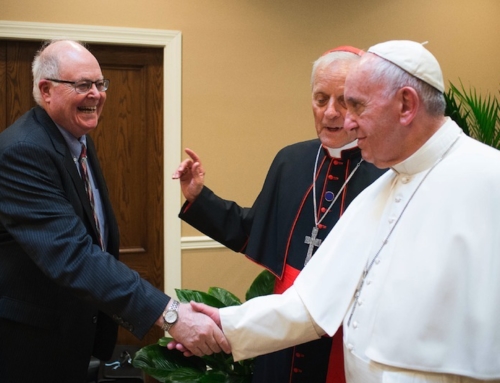Catholic League president Bill Donohue, who holds a Ph.D. in sociology, comments on an article on gays, religion, and suicide:
Four researchers with Ph.D.s have published an article in the American Journal of Preventive Medicine titled, “Association of Religiosity With Sexual Minority Suicide Ideation and Attempt.” It seeks to determine the effects of religion on suicidal ideas and attempts at suicide.
The data were culled from a larger study, one taken in 2011 by the University of Texas at Austin’s Research Consortium; it collected data on over 21,000 college students aged 18-30.
Consistent with other studies, this one concluded that lesbians, gays, bisexuals, and those who are questioning their sexual identity, have a higher rate of suicidal ideas and attempts at suicide than heterosexuals. But it breaks with most other studies on an important point: it asserts that gays who take their religion seriously are more likely to have suicidal thoughts, and are more likely to attempt suicide, than those who are not religious.
Most studies show an inverse relationship between how religious a person is and the likelihood of being suicidal. In one of the most impressive research undertakings to date, cited by the authors, it was found that “adults who attended religious worship at least once a month had lower odds of attempting suicide over the next 10 years compared with those who did not attend, and individuals who sought spiritual comfort had lower odds of suicide ideation for 10 years compared to people who were not spiritual.”
Similarly, in Austria, a noted study found that lesbian, gay, and bisexual (LGB) individuals “with a religious affiliation had lower odds of attempting suicide than LGB adults who were not affiliated, and those who felt a greater sense of belongingness to their religious organization were less likely to endorse suicide ideation.”
Even more important, “LGB individuals who left their religion to resolve the conflict between their sexual orientation and religious affiliation had greater odds of attempting suicide than those with unresolved conflict.”
Unfortunately, the authors fail to probe how seriously this undercuts the popular notion that once a gay person “liberates” himself from religious strictures, he will be at peace with himself. Just the opposite appears to be true, at least from this study. Falling back on oneself, especially during times of adversity, can be stressful, if not dangerous.
The most controversial finding by the four university researchers, as already indicated, reveals that gays, lesbians, bisexuals, and questioning individuals “do not experience the benefits of religiosity’s protective association against suicide ideation and attempt.”
From this conclusion, the researchers contend that faith-based organizations “may not be appropriate for LGBQ individuals in distress, especially when religion may be a contributing element in distress for LGBQ individuals.” But their data, as the authors readily concede, are contradicted by other studies (in Austria those who left their religion experienced worse problems). It is thus quite a leap to conclude that faith-based organizations do more harm than good.
The undercurrent of bias that is evident in this study is affirmed when the researchers maintain that “two of the world’s most common religions, Christianity and Islam, largely condemn homosexuality as a sin,” and are therefore a large part of the problem.
Astonishingly, they do not cite Judaism, which was the first world religion to condemn homosexuality, and from which Christianity and Islam drew upon copiously in crafting their teachings on marriage and the family.
More bias can be detected by considering a remark made by John R. Blosnich, one of the four authors. He spoke to the Huffington Post about the problem facing religious-minded gays, commenting, “It can be very scary to be caught in a space where your religion tells you that you are a ‘sinner’ just for being who you are.”
He should identify which religion he is talking about. It is certainly not true of Catholicism: homosexuals are regarded as children of God, the same way heterosexuals are. Why this needs to be said at all is troubling as this teaching is not new. But to those who want to put a negative tag on Christianity, it makes sense to distort the truth.
If a heterosexual commits adultery, he is no more condemned for being straight than a homosexual who practices homosexuality is for being gay. It is the behavior—adultery and homosexuality—that counts as a sin, not sexual orientation.
One of the findings that the researchers uncovered deserves more attention than they allow. They found that “questioning individuals had the highest prevalence of recent suicide ideation (16.4%) and bisexual students had the highest prevalence of lifetime attempts (20.3%).”
The authors do not speculate why this is so. But if there is one thing that those who question their sexual identity have in common with bisexuals—and this is not true of gay men and lesbians—it is their tentative status. Who are they?
Living with this kind of indeterminacy may explain their desperate condition. It may also suggest that programs that encourage young people to experiment—to find out whether they are straight or gay—may actually be creating a kind of sexual dissonance that is harmful to their wellbeing. Regrettably, this is currently going on in some schools, the effect of which is to promote a serious identity crisis.
Those who question their sexual identity deserve our compassion, as well as our assistance. What they don’t need is further experimentation. The fact that so many young people are caught up in this quandary today is a tribute to the postmodernist belief that denies the existence of nature.
Fatuously, they hold that all human behavior is a social construction. This is not only unscientific—it is an ideological contention—it leads to many wrongheaded policies. It is also the driving force behind the problems incurred by boys who think they are girls, and vice versa.
Of course, the central problem remains, and it is independent of religious practice and affiliation: Why are gays more suicidal than heterosexuals? There are plausible explanations, none of which comport with the ideological leanings of the authors of this study.
Is there a link between promiscuity and suicide, and are gays more promiscuous than heterosexuals? The answer to both questions is an unqualified yes.
In a 2004 article published in the same journal as the study by the four authors, it found that girls who are sexually active are almost three times more likely to attempt suicide than girls who abstain. For boys, those who are sexually active are eight times more likely to attempt suicide. A more recent study published in the Journal of Abnormal Psychology established a strong correlation between casual sex and depression among teenagers.
According to practicing psychotherapist Zev Ballen, “The correlation between sexual promiscuity, depression, and suicide is very clear. Multitudes of people are attempting to fill up with sex—this breeds guilt, self-hatred, emptiness and shame.” Yet one strains to find researchers and educators who are willing to admit that promiscuity is a gateway to self-destructive behaviors.
The problem of promiscuity in the gay community is particularly acute. In a brutally honest article last year in the Huffington Post, journalist Michael Hobbes wrote that “Gay people are now, depending on the study, between 2 and 10 times more likely than straight people to take their own lives. We’re twice as likely to have a major depressive episode.” It is for reasons such as this that gay activist Larry Kramer once said there is no such thing as a gay lifestyle—it’s a deathstyle.
“In a survey of gay men who recently arrived in New York City,” Hobbes says, “three-quarters suffered from anxiety or depression, abused drugs or alcohol or were having risky sex—or some combination of the three.” (His italics.) Which begs the question: Why are most gay men who move to New York City unable to live a normal life? Heterosexuals seem to have little problem making the adjustment. Hobbes provides an answer, and it is one that needs to be taken seriously.
Hobbes maintains that “Despite all the talk of our ‘chosen families,’ gay men have fewer close friends than straight people or gay women.” This speaks volumes about the lonely lifestyle that so many gay men experience, calling into serious question their ability to form long-lasting bonds.
Consider what one young man, Adam, cited by Hobbes, said about his coming out. “I went to West Hollywood because I thought that’s where my people were. But it was really horrifying. It’s made by gay adults, and it’s not welcoming for gay kids. You go from your mom’s house to a gay club where a lot of people are on drugs and it’s like, this is my community? It’s like a f***ing jungle.”
Adam has touched on something real: real communities don’t act this way. What he is describing is a constellation of fully atomized individuals, not a community where social bonds thrive. This matter needs to be studied more fully, but for political reasons it will not be.
How can it be that at a time of growing acceptance of gay rights so many gays are unhappy? The conventional wisdom, one widely shared by the media and in the schools, is that the legalization of gay marriage, and its acceptance by the public, would lead to an overall increase in the wellbeing of gays. It may sound plausible, but there is no evidence to support this outcome.
Indeed, as Hobbes shows, “In the Netherlands, where gay marriage has been legal since 2001, gay men remain three times more likely to suffer from a mood disorder than straight men, and 10 times more likely to engage in ‘suicidal self-harm.'” It’s no different in Sweden, the sexual Shangri-La of elites. The Swedes have had civil unions since 1965, and gay marriage since 2009, but “men married to men have triple the suicide rate of men married to women.”
Were gays better off in the closet than out? As Hobbes points out, “A study published in 2015 found that rates of anxiety and depression were higher in men who had recently come out than in men who were still closeted.” This is not a brief to force gays back into the closet, but it is a wake-up call to those who think that the decline in stigma redounds to better psychological health for gays.
It must be stressed that promiscuity, while endemic among gay men in more recent times, was not always so. Kinsey found that homosexuals were less promiscuous than heterosexuals. Even as late as 1960, researchers were finding that homosexuals were relatively sexually inactive. But once the sexual revolution hit stride in the 1960s, sexual experimentation increased among men and women, straight and gay. So did STDs.
It is promiscuity that is the biggest threat to those who practice it, not social stigma or religious strictures. But many elites in the health profession and higher education are in a state of denial over this verity, and those who know better are too often intimidated from speaking the truth. Until this changes, there will be little or no progress in reversing the experience of many gay men.







